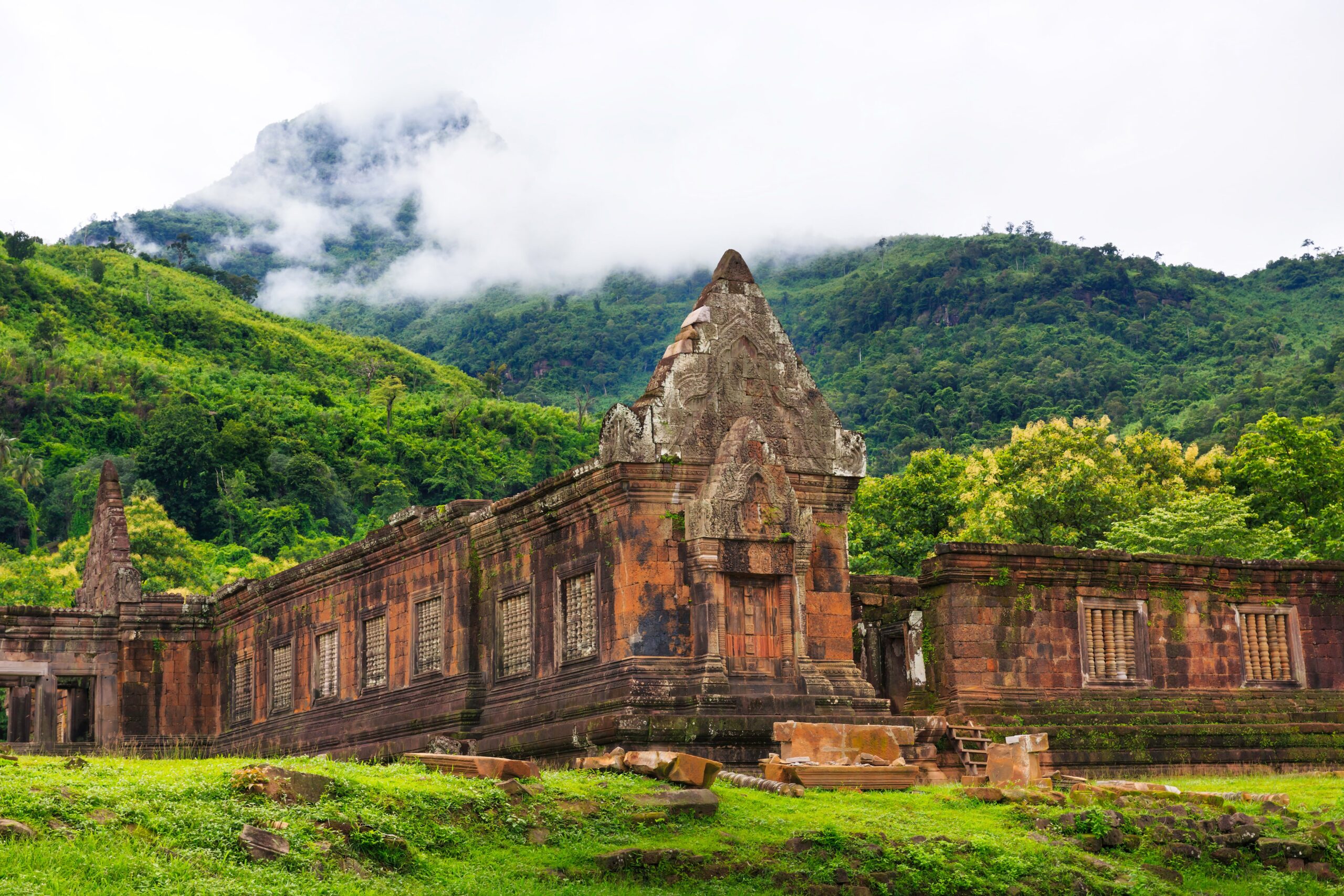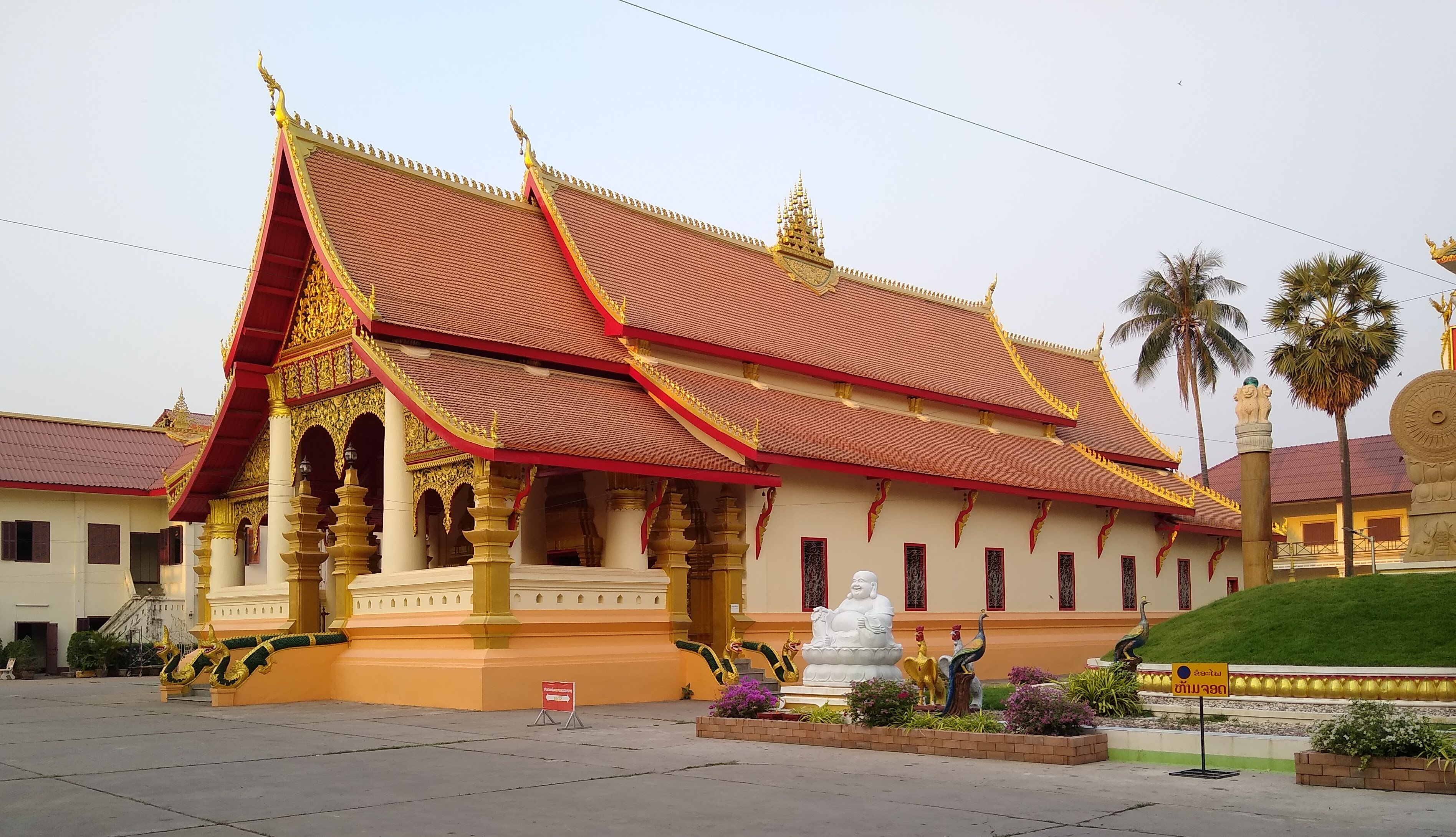
10 Sacred Temples In Laos You Shouldn't Miss On Your Cultural Journey
Content []
Laos is a land of spiritual serenity and rich cultural heritage, where ancient temples stand as timeless witnesses to the country's Buddhist traditions. Whether you're seeking architectural beauty, peaceful reflection, or cultural insight, the temples of Laos will leave a lasting impression. Here are 10 must-visit temples in Laos you shouldn't miss on your cultural Journey.
Table of Contents
- 1. Wat Xieng Thong – Luang Prabang
- 2. Pha That Luang – Vientiane
- 3. Wat Sisaket – Vientiane
- 4. Wat Phu – Champasak (UNESCO World Heritage Site)
- 5. Wat Mai Suwannaphumaham – Luang Prabang
- 6. Wat Ho Phra Keo (Haw Phra Kaew) – Vientiane
- 7. Wat Aham – Luang Prabang
- 8. Wat Ong Teu Mahawihan – Vientiane
- 9. Wat Manorom – Luang Prabang
- 10. Wat Phra Bat Tai – Pakse
1. Wat Xieng Thong – Luang Prabang
Address: Khem Khong Road, Luang Prabang, Laos.
Located at the confluence of the Mekong and Nam Khan rivers, Wat Xieng Thong is one of the most iconic religious and architectural landmarks in Luang Prabang. Built in 1560 under King Setthathirath, the temple is renowned for its low-sweeping rooflines typical of classic Lao temple design. Inside, visitors are captivated by the vibrant "Tree of Life" mosaic and intricately gilded walls. As both a sacred site and cultural treasure, Wat Xieng Thong is a must-visit for anyone interested in Lao heritage and Buddhism.
2. Pha That Luang – Vientiane
Address: That Luang Road, Vientiane, Laos.
More than just a religious monument, Pha That Luang is a national symbol of Laos. Believed to date back to the 3rd century and rebuilt in the 16th century, the massive golden stupa is said to enshrine a relic of the Buddha. Standing nearly 45 meters tall, the structure shines brilliantly in the sunlight and reflects the essence of Theravāda Buddhism and Lao identity. Each year during the That Luang Festival, thousands of pilgrims and visitors gather here to celebrate and pay their respects at one of Laos’ most sacred sites.
3. Wat Sisaket – Vientiane
Address: Lan Xang Avenue, near the Presidential Palace, Vientiane, Laos.
As the oldest surviving temple in Vientiane, Wat Sisaket was built in 1818 and features Thai-style architecture rarely seen in Lao temples. Its most remarkable feature is the thousands of small Buddha statues placed in wall niches, many of them centuries old. The serene courtyard, cloistered walkways, and layered roofs offer a tranquil space for contemplation. Wat Sisaket is an excellent destination for those looking to understand Lao Buddhism in a peaceful setting.
4. Wat Phu – Champasak (UNESCO World Heritage Site)
Address: Champasak District, Champasak Province, southern Laos.

Unlike the temples in urban centers, Wat Phu is a centuries-old religious complex nestled at the base of Phou Kao Mountain in southern Laos. Recognized as a UNESCO World Heritage Site, it was originally a Hindu temple dating back to the 5th century, later converted into a Buddhist site in the 11th century. The moss-covered stone stairways and hilltop sanctuaries create an atmosphere of sacred mystery. With its ancient Khmer architecture and dramatic natural setting, Wat Phu is both a spiritual and historical journey.
5. Wat Mai Suwannaphumaham – Luang Prabang
Address: Sisavangvong Road, Luang Prabang, Laos.
Also known as "Wat Mai" or "The New Monastery," Wat Mai Suwannaphumaham is one of the largest and most ornate temples in Luang Prabang. Built in the late 18th century, it stands out with its richly decorated red-and-gold façade and intricate carvings depicting scenes from the Ramayana. Once the ceremonial home of the Emerald Buddha during festivals, the temple remains a spiritual hub of the former royal capital. Conveniently located next to the Royal Palace Museum, Wat Mai is a popular stop for both pilgrims and cultural explorers.
6. Wat Ho Phra Keo (Haw Phra Kaew) – Vientiane
Address: Rue Setthathirath, Vientiane, Laos Built in 1565 to house the revered Emerald
Buddha, Wat Ho Phra Keo is one of Vientiane’s most historically significant temples. Although the Emerald Buddha now resides in Thailand, the temple serves as a museum featuring ancient Buddha images, wooden carvings, and traditional Lao art. Its architecture is a blend of Lao and Siamese styles, offering visitors a glimpse into the cultural heritage of Laos.
7. Wat Aham – Luang Prabang
Address: Intersection of Sisavangvong Road and Kounxoau Road, Luang Prabang, Laos
Known as the “Monastery of the Opened Heart,” Wat Aham holds deep spiritual significance for locals. Rebuilt in the 19th century on the site of an ancient shrine, it is flanked by two sacred banyan trees believed to represent ancestral spirits. The temple’s interior is adorned with colorful murals illustrating Jataka tales stories of the Buddha’s past lives adding a mystical and serene ambiance.
8. Wat Ong Teu Mahawihan – Vientiane
Address: Quai Fa Ngum, near Khoun Boulom Road, central Vientiane, Laos

Wat Ong Teu, meaning “Temple of the Heavy Buddha,” was once a major center for Buddhist education in Laos. Reconstructed in the 20th century after being destroyed in earlier wars, the temple is known for its massive bronze Buddha statue and intricately decorated triple-tiered roof. It continues to serve as a place for Buddhist studies and monk training.
9. Wat Manorom – Luang Prabang
Address: Phou Vao Road, south of central Luang Prabang, Laos
Wat Manorom is one of the oldest temples in Luang Prabang, believed to have been established in 1375. It houses a large seated Buddha statue made of bronze, weighing over two tons, dating back to the Lan Xang Kingdom. Despite suffering damage during conflicts and natural disasters, the temple retains its solemn presence and remains a popular destination for both worshippers and visitors.
10. Wat Phra Bat Tai – Pakse
Address: Road 46, near the Mekong River, Pakse, Champasak Province, Laos
Located along the Mekong River, Wat Phra Bat Tai is a revered temple in southern Laos, known for enshrining a sacred Buddha footprint. The temple showcases traditional Lao architectural elements blended with subtle Khmer influences. It offers a tranquil setting, especially at sunset, when golden light reflects over the river—making it a spiritual and scenic highlight in Pakse.
Laos is a cultural treasure trove, home to sacred temples stretching from north to south. Each temple is not only a place of worship but also a testament to history and unique architectural artistry. Exploring these 10 temples in Laos offers a deeply spiritual experience and a greater understanding of the country’s rich Buddhist heritage.
Tags:
Read this next
Quick Contact
WHAT DO CUSTOMERS SAY ABOUT US?
Look at the following reviews from our customers




.jpg)